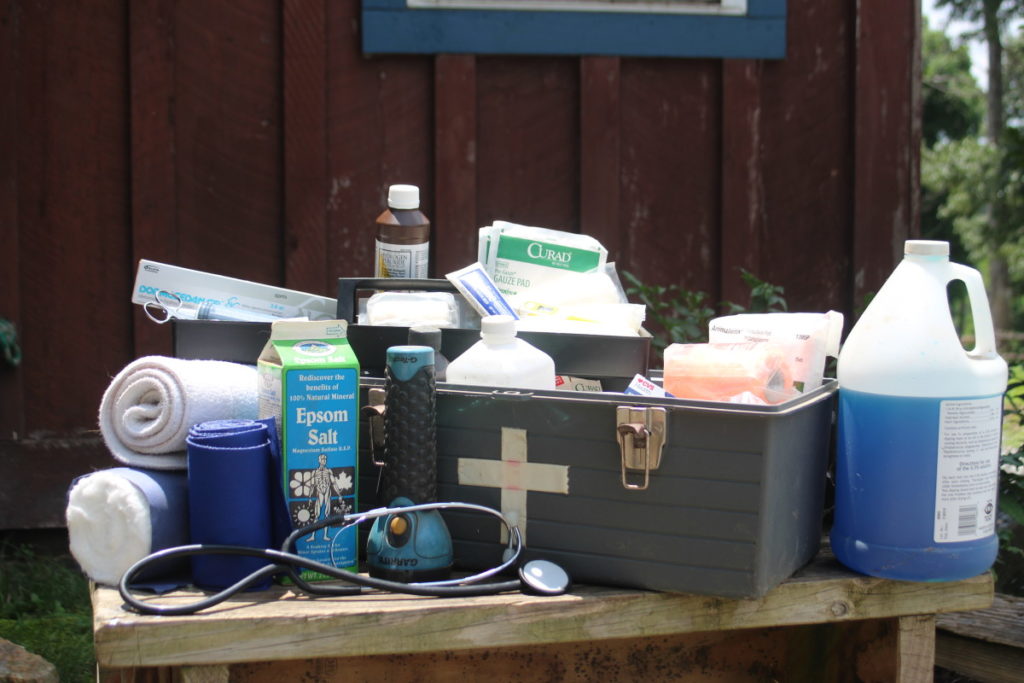What’s in Your Equine Emergency Kit?

Last night I took an hour and watched the free Penn Veterinary webinar on equine emergencies. It was part of their First Tuesday series where they provide a free zoom educational webinar related to equine health and management.
This was a great webinar and it will be posted on their Vimeo channel if you want to take a look.
Right off the bat, they talked not just about what products or drugs you need in your emergency kit but what emergency skills every horse owner should have. If you own horses your emergency skill list should include the ability to assess a digital pulse, use hoof testers, apply a pressure wrap, apply a regular wrap, pull a shoe and give an intra-muscular injection. It was also stressed that every horse owner should also have an emergency plan to get their horse to the hospital if surgery or hospital care is needed. If you don’t own a trailer, you need a plan ahead of time to get a ride.
Dr. Arbittier suggested the following for a horse owner’s emergency kit:
Sedatives: oral or injectable such as trazodone, ace, or injectables like ace or xylazine. Also make sure
you have appropriate syringes.
Tool: Headlamp, scissors, gloves and towels
Abscess Tools: animalintex or diapers, Epsom salts, duct tape and a pan for hoof soaking
Thermometers: Have more than one.
Other medications: antimicrobial scrub like betadine
NSAIDS – bute, equiox, Tylenol
Antibiotic Eye Ointments – like neomycin, make sure NOT TO USE STERIODS
Topical ointments – Neosporin, panalog
Wound Care: 4 x 4 gauze for cleaning
Wrapping materials both disposable and non disposable.
One aspect of the talk that I had not given much consideration was what we can do to improve the working environment for the veterinarian as this can impact the care they give the horse. Things to think about when calling for an emergency vet visit. Can the vet get their vehicle close to the barn? Is there a safe place for the veterinarian to work? Do you have hot water available at the barn? If not, make sure you have some there for use. Do you have a plow or snow emergency plan because we all know horses like to have emergencies in bad weather too! The final farm concern was whether or not a vehicle can get in a pasture. Sometimes, emergencies happen in the pasture and the horse cannot be moved. In those cases, can the veterinarian get to them with their truck so they have easy access to their supplies?
The webinar then went on to teach some of the basic emergency skills such as how to take a digital pulse and how to do a pressure wrap. I won’t outline that here but will encourage you to watch the webinar yourself.
I encourage you to check out the Penn Medicine page for information on future webinars.
